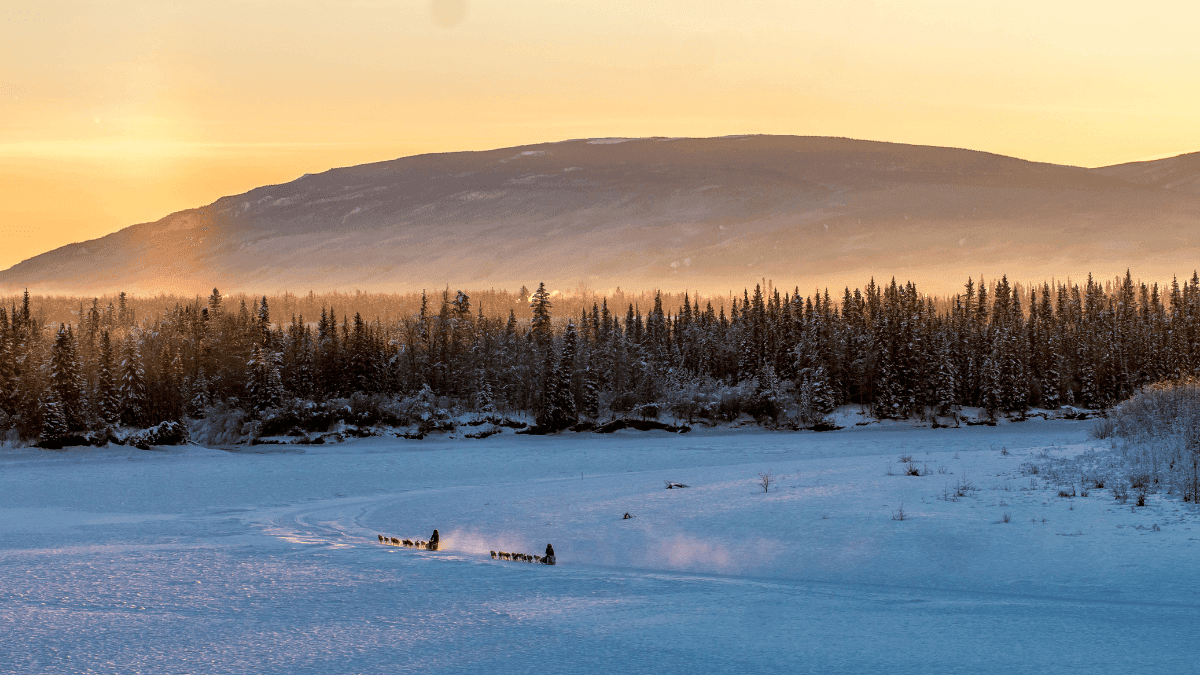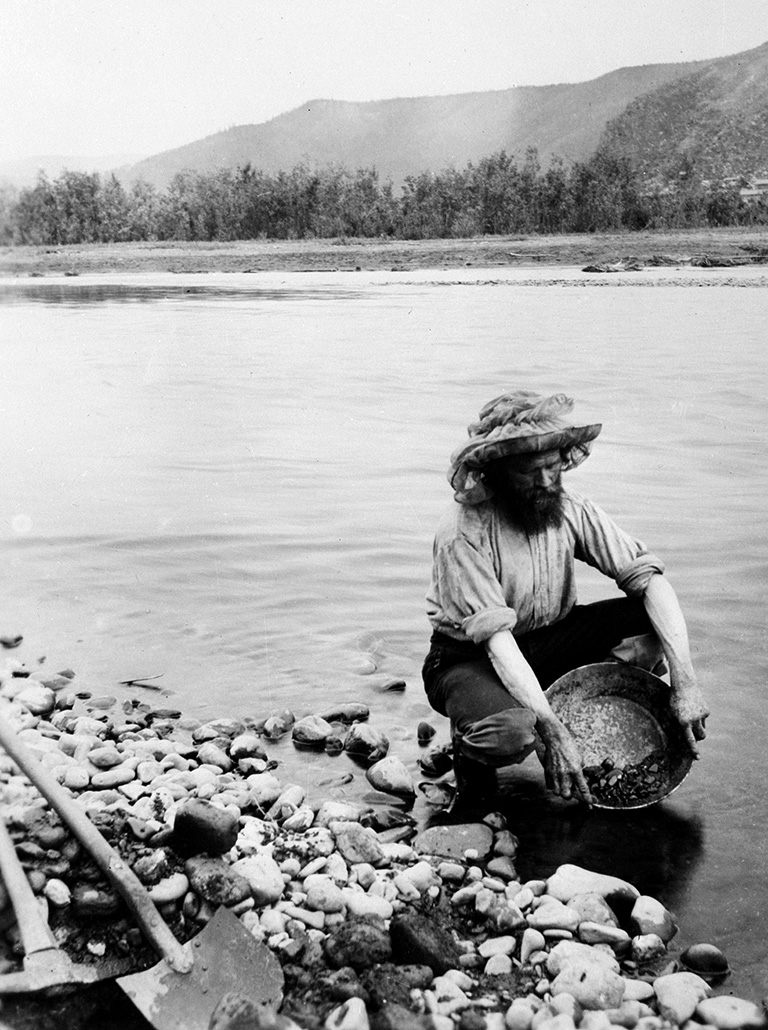The Return of the Great Yukon Gold Rush

If you’ve been paying attention this year, precious metals and the names tied to them are melting faces.
Between the money printer’s off button being broken, hot and messy geopolitics, AI reshaping market dynamics in real time, and just a whole lot of uncertainty, precious metals are having their best run in decades.
Gold is up over 50%.
Silver is up 66%.
Copper is up 27%.
With that backdrop, juniors finally have a tailwind. A plethora of stocks have jumped from pennies to a dollar in weeks, and the market is paying for results. Good drill holes are getting rewarded, financings are getting filled, and the tape is doing the talking.
With all of this said, this article focuses on the place that has produced new success stories at an unreal rate over the past year.
The Yukon.
We’ll cover how we got from the Klondike gold rush in the 1800s to now, why the Yukon is such a favourable place to explore, which names have already printed huge gains, and which look like they very well could be going to a dollar.
From The Klondike Gold Rush to Now

Take a look at this dude. A prospector in the late 1890s, panning creek gravels in what is now Canada’s Yukon, just east of Alaska.
The spark was a big find of gold in creek gravels in 1896 on Rabbit Creek, later called Bonanza Creek, near today’s Dawson City in northwest Yukon. A year later, the steamship Portland docked in Seattle with sacks of Klondike gold and the stampede began. Roughly 100,000 people set out. About 30,000 made it north.
The gold they chased was placer gold. Water had washed it out of hard rock upstream and trapped it in creek gravels. Early winners scooped nuggets with pans and sluices. As the rush faded, larger outfits moved in with dredges, and a new rail link shortened the route, but the easy creek gold never lasted.
Fast forward to today. The gold rush was simply the hint. Those creeks were catching gold shed from many bedrock systems across a broad belt. With real roads, power, modern mapping, and geophysics, we’re finally chasing the sources in the rock, not the crumbs in the creek. That’s why Yukon discovery headlines keep popping up. The geology here is set up for it, with systems that put a lot of ounces near surface and scale when you drill them. Now let’s talk about what those systems are and why the Yukon is so favorable for finding them.
Why Yukon Rocks Work
So without throwing a bunch of geology terms at you that would make your brain melt out of your ears, here’s why this district keeps producing winners.
A good place to start is RIRGS, short for reduced intrusion-related gold systems.
Think of a big blob of magma that cooled underground and cracked the rock. Later, hot fluids moved through those cracks and left thin quartz veins charged with gold. In this system the veins don’t show up once and vanish. They repeat through and around the cooled body, often starting close to surface and spreading across wide zones.
For investors, that’s the whole appeal. Repeating veins mean long, consistent drill runs instead of one lucky hit. Starting near surface means you can think open pit, which is the cheapest way to mine gold. And when those long runs line up from one section to the next, you get scale fast.
Snowline Gold’s Valley is what that looks like in practice. It’s a RIRGS system that starts at surface and stacks long runs into real tonnage.
At US$2,150/oz gold, the project is valued at about C$3.4B after tax with a ~20-year mine life. Push gold to US$3,150/oz and that climbs to ~C$6.8B. (Snowline Investor Presentation, Valley PEA)
Because this style lends itself to open pit and straightforward processing, costs per ounce are low, which leaves juicy margins at today’s prices. That’s the point: this system can turn repeatable near-surface veins into a long, cash-generating mine.
And these systems don’t usually show up alone. RIRGS often come in clusters along the same belt, so one discovery lifts the odds for its neighbors.
It’s not just Valley. In July 2025 Snowline said it had discovered a RIRGS at its Cynthia project about 27 km away with “densely sheeted quartz veins exposed at surface.”(Snowline’s July 2, 2025 update). That’s the cluster effect at work and a big reason Yukon headlines keep coming.
Now that we’ve run through the history and the rocks, let’s take a look at some of the most promising companies out there getting active in the Yukon today!
Yukon Companies To Know & Watch
By taking a glance at the list of Yukon gold companies, it’s obvious a bunch of names have put up wild gains.
We already covered Snowline Gold. They set the bar and showed what this ground can deliver, which pulled attention to the rest of the belt.
The most recent Yukon headline landed on October 1, when Prospector Metals ($PPP.V) hit the new TESS Zone at its ML project with 44 m at 13.79 g/t gold and 1.84% copper from 62 m, including 24.65 m at 21.93 g/t and 13 m at 37.88 g/t.
It starts near surface and fits the RIRGS model we just walked through, which is why the stock ripped almost 300% in a day. Like I said, good drill results are finally getting rewarded. More assays are on the way too.
Then we have White Gold ($WGO.V), which recently flew into Dollarland. At the end of August they upgraded the flagship White Gold Project to about 1.73 million ounces indicated and 1.27 million ounces inferred, which snapped attention back to the camp. That was followed by fresh funding, so they’re now cashed up with runway to keep drilling and moving the project ahead through 2025. Some of the recent momentum could definitely be attributed to $WGO.V being named as one of Dennis Da Silva’s Top 3 picks for October, live on BNN.
Now, looking at a still very early yet promising company, we’ve got Goldstrike Resources ($GSR.V). They just recently acquired the Gold Strike One project in the Yukon. The ground sits roughly 500 metres from Snowline’s Valley deposit and basically wraps around it. Nothing is guaranteed, but like I mentioned, RIRGS tend to come in clusters, so this definitely deserves some attention.
Whether it’s the names we just ran through or others like $ONYX.V, $BYN.V, and $SIG.V, there’s a lot to be optimistic about with Yukon explorers and developers right now. You couldn’t ask for a better setup. Money is flowing, drills are turning, and the gains are coming.
Sources & image credits
Snowline July 2, 2025 update (RIRGS discovery at “Celestic,” Cynthia):
https://www.fox16.com/business/press-releases/accesswire/1045213/snowline-gold-discovers-new-rirgs-target-near-its-valley-deposit-and-provides-2025-field-program-update/BNN Bloomberg — “Dennis Da Silva’s Top Picks for October 1, 2025” (White Gold mention):
https://www.bnnbloomberg.ca/markets/2025/10/01/dennis-da-silvas-top-picks-for-october-1-2025/Image (prospector panning, circa 1897) — Canada’s History, Reconsidering the Gold Rush; photo credit: Library and Archives Canada (C-005389):
https://www.canadashistory.ca/explore/peace-conflict/reconsidering-the-gold-rush
Snowline Gold Corp. — Investor Presentation (PEA figures for Valley):
https://snowlinegold.com/investor-presentation/
Goldstrike Resources “Sanatana Resources Inc. Announces Closing of Transaction to Acquire Gold Strike One Project, Yukon, and Abitibi Property, Quebec.” News Release. Available at: https://www.sanatanaresources.com/news/sanatana-resources-inc-announces-closing-of-transaction-to-acquire-gold-strike-one-project-yukon-and-abitibi-property-quebec
What did you think of this article?
Let the author know your thoughts
Investment Disclaimer
The information provided in this article is for educational and informational purposes only and should not be construed as financial, investment, or professional advice. You may lose all of your money when investing. All investments carry substantial risk, including the potential for complete loss of principal. Past performance does not guarantee future results. You must conduct your own research and due diligence, including independently verifying all facts, numbers, and details provided in this article. Please consult with a qualified financial advisor before making any investment decisions.